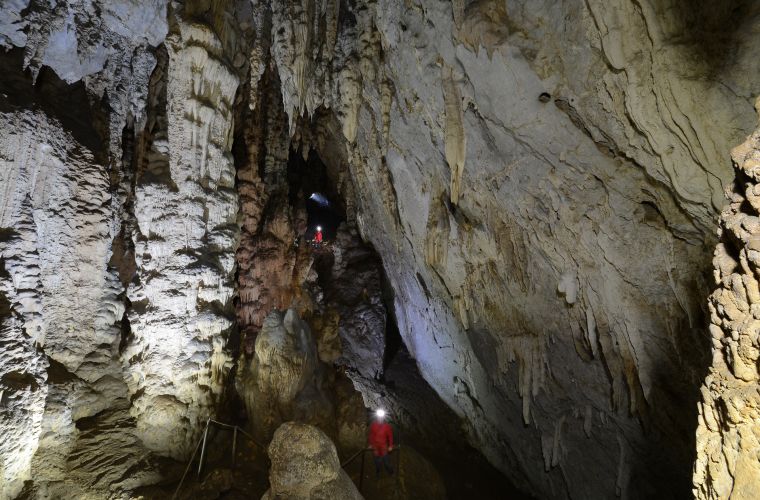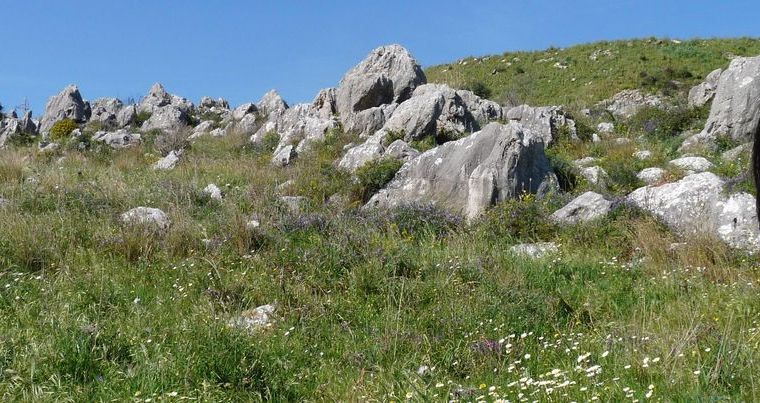Molara cave
Located near the hamlet of Cruillas, on the western outskirts of Palermo, the protected area falls on the slopes of the Billiemi mountain group, typically karst, arid and angular, of undoubted charm where, within a few tens of metres, there are three caves: Grotta della Molara, Zubbio della Molara and Grotta del Coniglio Morto or, dei Pitrazzi.”
A veritable treasure trove of paleontological (due to the presence of remains of the extinct Quaternary fauna) and archaeological evidence as well as numerous faunal peculiarities (cave-dwelling invertebrates and bats).
The Grotta della Molara, whose entrance is located at an altitude of about 85-90 meters, is a cavern of about a hundred meters in length which is accessed from a large shelter of about 500 square meters which contains a considerable anthropozoic deposit.
On the left wall there is a beautiful groove in the door which also extends inwards, with columns about ten meters high which are among the most beautiful in Sicily.
The cave has returned finds from the prehistoric age, ranging from the Bronze Age to the Paleolithic. Dating back to the Mesolithic, on the other hand, three very important burials without grave goods with the buried in a supine position, one hand on the shoulder, the other on the hip, the knees on the sternum.
One of the skeletons found dates back to around 8,600 years ago.
The physical characteristics are similar to Homo Sapiens Sapiens of the European type of 'Cro-Magnon', while the examination of the teeth has allowed us to trace the eating habits of our progenitor who ate basically vegetables, with a high consumption of carbohydrates and sugars, cause of conspicuous dental caries.
Still going down to a depth of six metres, the excavations have returned bones of cervids and birds and a molar of Elephas Mnaidriensis, an extinct species of dwarf elephant that lived in Sicily in the Pleistocene whose height was around 1.8 m and weighed around 1,100 Kg.
The cave hosts numerous colonies of bats (Rhinolophus ferrumequinum and Myotismyotis) whose droppings represent an important food source for cave animal communities.
Also interesting is the presence of the Cybaeodesmolara spider, the diplopod Orphanoiulus dinapolii, the isopode Trichoniscus alexandrae and the beetle Tychobythinus molarensis, all endemic to Grotta Molara and a few other caves in the Palermo area.
But certainly the most important inhabitant, recently discovered, is a beetle with a very difficult name: Tychobythinus molarensis. It is a troglobitic organism (the only one in Sicily), meaning that it lives exclusively underground or inside caves. They are animals that never see the light of the sun and have adapted to the conditions that this entails thanks also to the development of other sense organs (for example the antennae) which allow them to move in the dark.
The outside, on the other hand, is populated by mammals, birds and reptiles of various kinds and is characterized by the remains of ancient cultivations of olive trees, fig trees, almond trees, carob trees and prickly pears.


